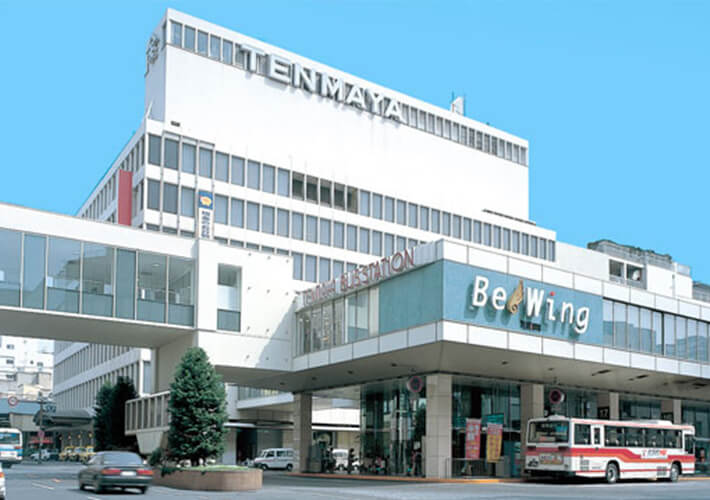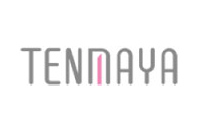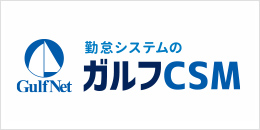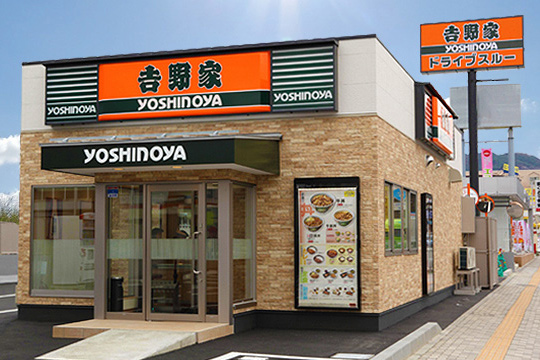Establishing a System for a “Work-Friendly Employment Environment”
Tenmaya Co., Ltd., which operates department stores mainly in the Chugoku region, has customized “Gulf CSM Time and Attendance Management” to align with the purpose of the Act on Advancement of Measures to Support Raising Next-Generation Children. This customization was aimed at helping employees who are raising children balance their professional and personal lives while also creating a work-friendly employment environment for all employees. Since department stores consist of various divisions and numerous work patterns, the system offers an intuitive shift registration function, a card-based clock-in feature, and a labor alert system for managing labor performance. This contributes to workstyle reform for employees.
Features of the System Supporting Workstyle Reform
Key Utilization Points in Business Workflow

Function List
- Understanding potential working hours at the time of worker recruitment
- Labor time calculation in one-minute increments
- Management of working hours for fixed-term contract employees
- Tracking insurance enrollment status
- Support and management of the modified working hour system (scheduled working hours and holiday acquisition)
- Adjustment of statutory holidays and paid leave acquisition
- Employee shift adjustment and operation
- Prevention of excessive working hours (to avoid health hazards)
- Confirmation and approval of working hours by employees themselves
Customer Feedback
Challenges Faced by the Company and Solutions Achieved
Before Implementation
- Time and attendance management was conducted using time cards, and there was no system in place to manage real-time working conditions across the Chugoku and Shikoku region stores (9 department stores and approximately 25 external shops).
- Although cooperation with the labor union ensured proper overtime reporting based on mutually agreed labor rules, it was difficult to comprehensively cover all cases.
- Over 600 different shift patterns existed across the company, making shift scheduling time-consuming and lacking a mechanism for error checking.
After Implementation
- Real-time tracking of clock-in statuses across all stores has been enabled, allowing managers to see “who is working, when, and at what time.”
- The alert function now notifies managers of excessive overtime, enabling proactive countermeasures. The system also helps detect discrepancies in labor hours and overtime, making it easier to identify “hidden overtime” and enforce proper labor management.
- When entering shifts, compliance with the Article 36 Agreement can now be checked at an individual level, allowing for proper labor time management.
Background of Implementation
Compared to supermarkets and the restaurant industry, department stores have diverse employment types and working hours, making labor management complex. Despite this, labor management was previously handled manually using paper and visual checks. Therefore, transitioning from analog to digital system management became an urgent necessity.
Additionally, since the workforce includes a wide range of age groups, with many older employees unfamiliar with using computers and smartphones, the system needed to be user-friendly.
The system selection was based on three key concepts: “easy shift creation,” “simple clock-in and overtime/leave requests,” and “collection of essential labor management data.”
Reasons for Choosing Our Solution
“Gulf CSM” includes three key features as standard functionalities: shift creation, clock-in & requests, and labor management & time and attendance alerts.
Furthermore, the intuitive interface allowed on-site employees to operate it easily. Given the limited number of PCs in sales areas, the system’s ability to support future shift creation on tablets also played a crucial role in its selection.
Another significant factor was the system’s ability to accommodate employees’ most frequent interactions, such as clocking in and submitting requests, while also allowing customization of standard functionalities based on detailed discussions with the assigned system engineer.


Notable Aspects and Key Advantages
Unlike financial accounting or HR payroll systems, a time and attendance management system is used by all employees, making ease of use the most critical factor. “Gulf CSM” met this requirement, and the smooth implementation process was greatly appreciated.
For functions such as “time recorder clock-in” and “overtime requests,” the system was designed to be as user-friendly as an ATM by integrating tablets and IC card readers. The technical team at GulfNet took our requests into account, resulting in a system that closely matches on-the-ground operational needs, making us highly satisfied.
Moving forward, we will continue making improvements and strive to become the leading company in time and attendance management within the department store industry.

Implementation Benefits
- With real-time visibility of clock-in statuses, we can now address labor management challenges more swiftly than before. Since on-site managers are now more aware of actual working hour data, total labor hours have decreased. Even during the busy year-end period, labor hours decreased by 20-30% compared to the previous year, right after system implementation.
- For shift creation, automated labor time calculations now enable accurate shift operations. Additionally, checking holiday acquisition has become simpler, ensuring store operations comply with regulations.
- By introducing IC cards, we eliminated the need to store time cards, reducing administrative tasks and storage costs. Since IC cards are now widely distributed among employees, we are also considering their use for access control to secure areas in the future.






